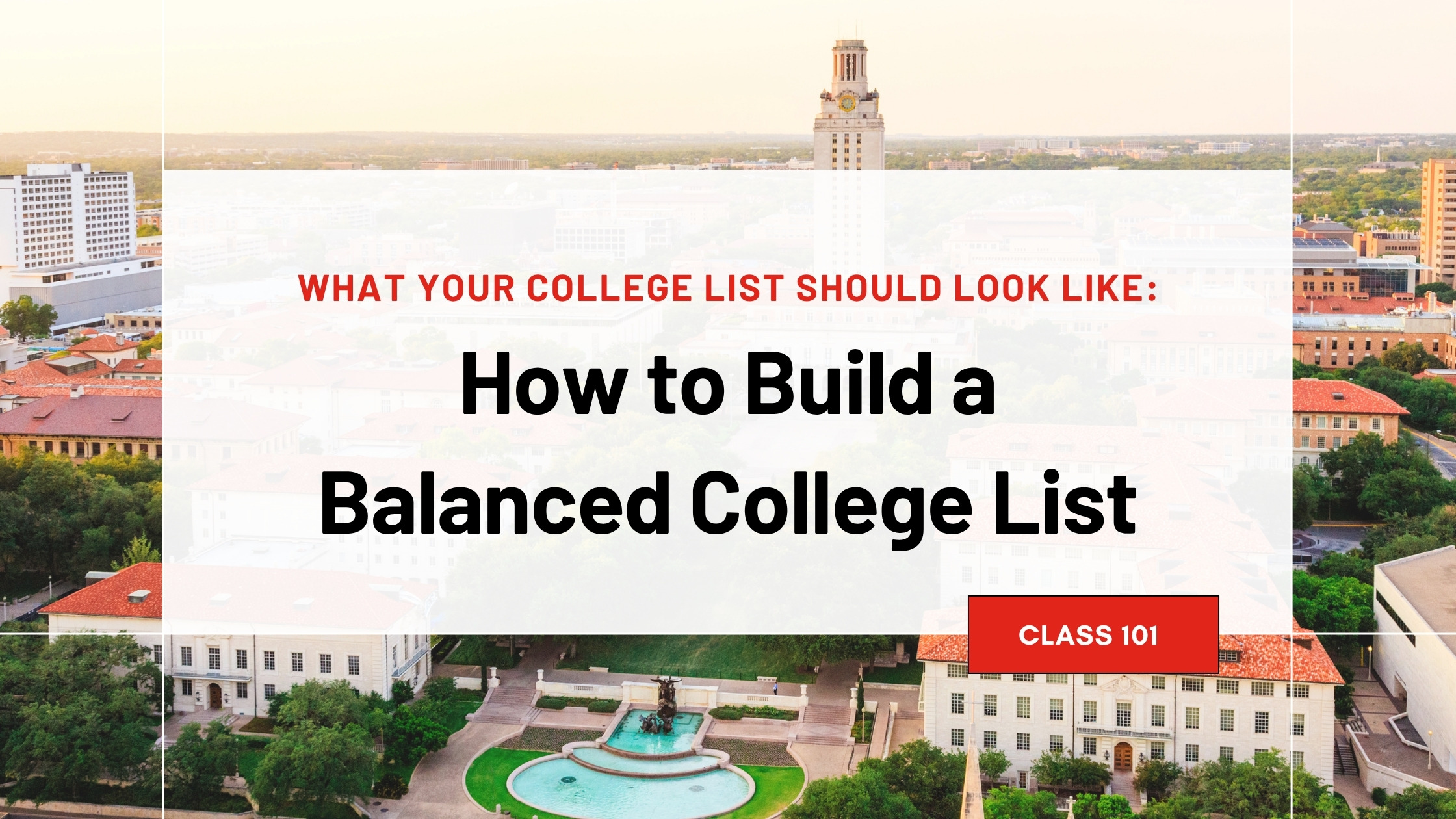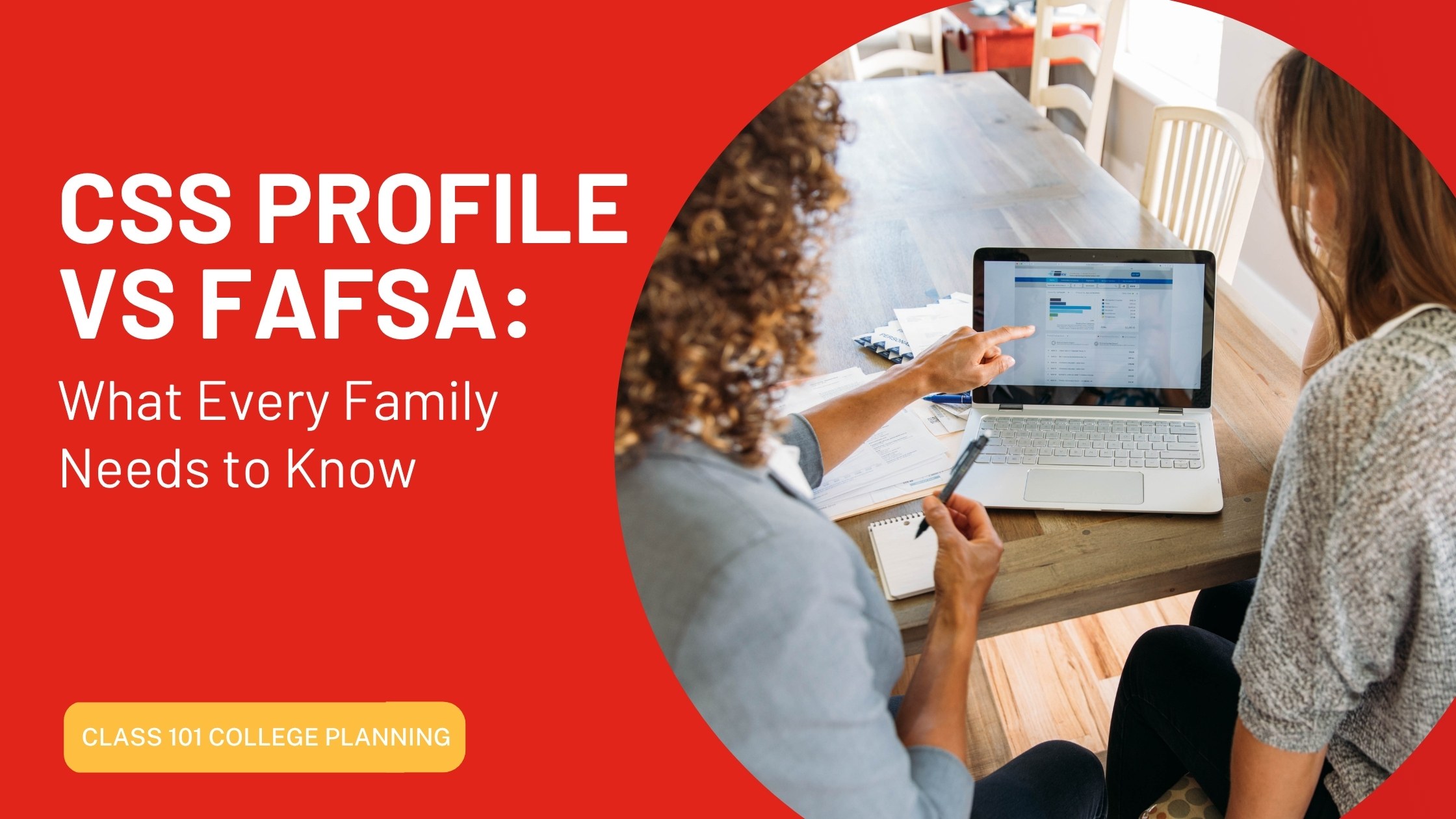June 24, 2025

It’s around this time of year that many students and families start looking for the right college. This process tends to start with a college list, a collection of schools to apply to that match a student’s academic profile, interests, and the kind of experience they want to have.
Having a well-rounded, strategic list of colleges is critical to a stress-free college experience. It allows students to focus their energies on places that they not only can get into but want to get into—that match their financial situation and academic needs.
In this blog, we’ll run through the key ingredients of a good college list. We’ll help students understand what constitutes a balanced college list, factors they should consider, and mistakes to avoid.
In today’s age of competitive admissions, it can be difficult to know what a student’s “goal” list should look like. How many colleges should they look at? What should the qualities of these schools be? Should their list be highly selective? Schools they know they can get into? Something in between?
When assembling a college list, the word we use at Class 101 is “balanced”. Students should list a mix of schools so they have options available to them. Still, many wonder: What does this look like in practice?
For our students, we suggest a list that consists of about seven schools. This list should include reach, match, and safety picks and match a student’s financial, social, and academic profile.
What do we mean by reach, match, and safety picks?
Reach schools refer to those schools where admission for a student is low or unlikely. Reach schools may be elite institutions with low acceptance rates or are slightly above a student’s academic profile. A top 20 university would be a “reach school”, even before considering GPA and test scores.
We encourage students to identify one or two reach schools to understand the options available to them. Some students like to seek out challenges and take risks. If a student finds a reach school they like, it can be encouragement for them to make the changes needed to be a competitive candidate.
Target schools refer to those schools where a student has a good chance of admission. Target schools tend to be those that match a student’s academic profile. If a student has a 3.5 GPA, they may want to look for schools that tend to admit students with a GPA around 3.5.
Target schools should make up the bulk of a student’s college list. We encourage students to find three to five target schools.
Finally, safety schools refer to those colleges and universities where admission is very likely if not guaranteed. These can be state schools or schools where the student’s academic profile exceeds that of the average admitted student.
Safety schools provide students with peace of mind, knowing they are likely to be accepted somewhere. They can also be useful financially, as they may be more likely to offer students with financial aid or merit scholarships.
However, students should be sure to list safety schools that they actually want to attend. A school in a student’s hometown may offer near-certain admission, but if the student is going to resent going there, it may be best to leave it off the list.
We encourage students to list two or three safety schools.
While selecting this list of 7-10 schools, we advise students to remain mindful of a few important factors that may impact the degree to which a school appeals to them:
Finding schools that meet a student’s criteria is not as daunting as it might seem. In addition to the tools used by many high schools for college and career readiness – such as Common Data Set, Naviance, and BigFuture, students have a variety of other options available to them.
First, students should take advantage of opportunities to visit campuses and attend virtual tours. These can be a great way of understanding how colleges operate and what they offer.
Second, students can take advantage of alumni networks. Alumni can discuss what attracted them to a particular college or university, what they experienced, and what they are doing with their degree.
Finally, students can look at admissions statistics and student outcomes. If a student wants a job in forensic science and the university they are researching has high placement post-graduation, a student may want to list that school near the top of their list.
Lastly, we want to leave students with a list of common errors that students make in assembling their college list, mistakes that make it harder for them to get into an institution that matches their interests.
***
In short, a thoughtful, strategic college list is integral for students starting their college journey. We encourage students to start thinking about their options early and to not hesitate when asking for guidance, whether that’s from their counselor, college planner, or mentor.
Remember, the list is a roadmap, not a ranking. It only provides you with a sense of where you might want to go. After you have been accepted, you can begin the hard work of sorting which college you want to commit to.
If you need help with assembling your college list or any other part of the college application process, we encourage you to reach out and book a college planning session with one of our advisors.

October 10, 2025
Senioritis. The senior slump. Slacking disease. There are many names for it, but it’s a tendency almost everyone is familiar with: As students approach the end of their high school career, they feel a decreased sense of motivation. Their grades slide. They stop participating in extracurriculars. It’s an understandable tendency. After months, if not years, […]
Read More >
September 22, 2025
Between tuition, books, meal plans, and dorm rooms, college can be an expensive proposition. On average, students pay $38,270 for college. That number can raise up to $58,628 per academic year for students attending private universities. Given these expenses, it’s no wonder that families look for every opportunity to cut costs. In this blog, we’ll […]
Read More >
August 25, 2025
The average student spends $38,270 per year on college expenses—a number that includes not just tuition but also books, supplies, and daily living expenses. This number is even higher for students attending school at a private school, with the average student paying some $58,628. In short, college is expensive. It is something that many families […]
Read More >